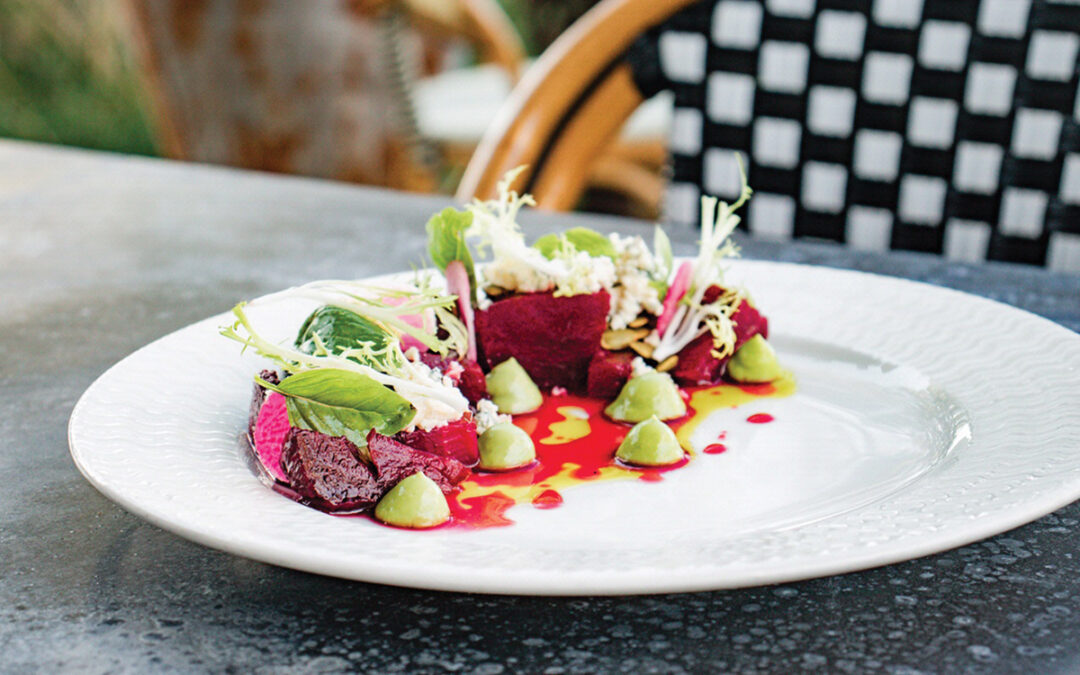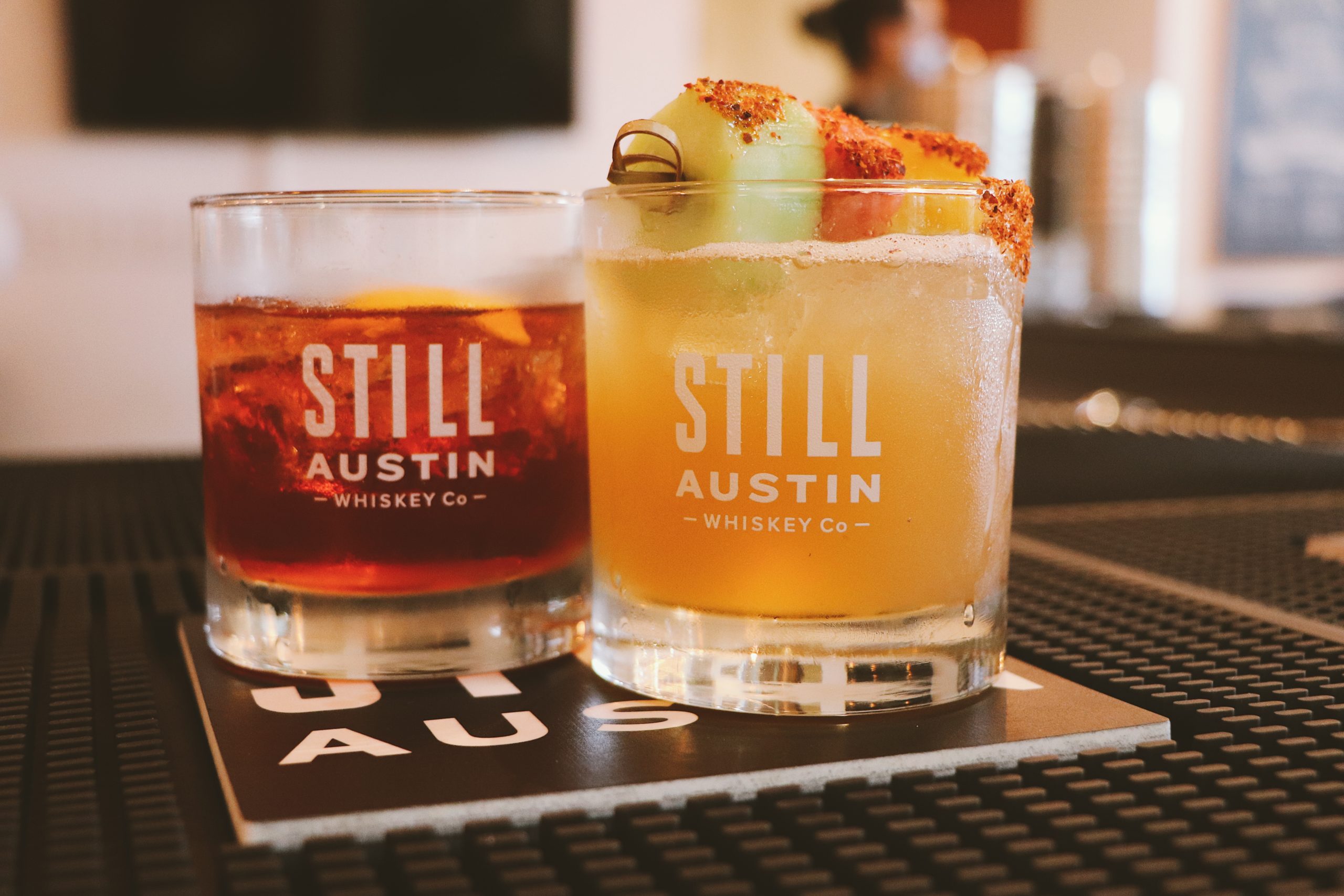Want to fire up a hot debate? Try defining the word barbecue. Now try running that by a Texan. Texans love to argue about barbecue, almost as much as they love to eat it. It’s no surprise that Texans have developed their own unique brand of barbecue, but you’d be hard pressed to find two Texans who would agree on the details. Which meat, which wood, the proper cooking time and temperature, sides or no sides, not to mention to sauce or not to sauce – all are serious cause for debate or, shall we say, bones of contention. Here is what barbecue is not. It’s not grilling. It’s a bit confusing perhaps, since sometimes the contraption we use for grilling is called a barbecue, but generally, grilling takes place quickly, over intense, high heat, and the food is placed directly over the live fire. We grill over charcoal or with gas, and sometime some wood chips too, charring the exterior of the food for that crusty, caramelized surface, while sealing in the juices. The method works beautifully for all sorts of meats – steaks, hamburgers, hot dogs, seafood, chicken pieces and more.
True barbecuing requires a long, slow cooking process. It (almost always) employs low heat applied indirectly, with smoldering wood or charcoal to cook the food. Indirect cooking indicates a heat source located away from the food, often using smoke chambers and separate fireboxes and the like. Large, tough cuts of meat, whole turkeys or pigs, even whole goats and cows can be cooked in this fashion. Grilling is a primal, Old World phenomenon. Barbecuing seems to have sprung up primarily in the New World, beginning in the Caribbean, then spreading to the American South, Missouri and, of course, Texas.
Here’s a quick look back at the influences that shaped what we call Texas barbecue today.
Pit cooking was surely the earliest form of barbecuing. Today a “pit” may be made of heavy- gauge steel or brick and masonry, and it may even be portable. But early on, pit cooking required an actual pit – a hole in the ground. It would be lined with stones, then with firewood. The wood would be lit and reduced to hot glowing coals. The food would be seasoned, then wrapped in whatever fireproof material was handy – perhaps maguey or banana leaves or seaweed along the coast. A covering of earth or sand would be piled on top and the food allowed to cook for at least 12 hours, or most likely, up to twenty-four. Next, the food would be dug out, unwrapped, and the resulting meat would be falling-off-the-bone tender and incredibly flavorful. In the Old South, pit barbecues consisted of a grate of sticks set over hot coals in the ground. The concept spread to Texas along with settlers, beginning in the early 1800s. After the Civil War, freed slaves moving away from the Deep South brought their brand of barbecue to East Texas. Pork was the most common meat to be barbecued in this manner.
Before the advent of refrigeration, when a whole hog was slaughtered, it called for a sizable crowd to eat it all, and the event developed into quite a festive one. It wasn’t long before East Texas African-American-style barbecue became an integral part of the Texas barbecue scene. The end of the Civil War signaled the emergence of the Texas cattle industry, which led to the honored tradition of pit-cooking a whole steer. The steer fed even more folks than the whole hog, and Texas barbecues just kept getting bigger. And though today’s barbecue menus boast a wide variety of meats, most folks will attest to the fact that beef is the quintessential Texas barbecue meat. Author Robb Walsh, in his Legends of Texas Barbecue Cookbook, tells how German and Czech butchers who settled in Texas in the 1800s “sold fresh meats and smoked their leftovers in enclosed smokers, as they had done in the Old Country.” Walsh notes that these old meat markets have now become hallowed halls of Texas barbecue. Even though their “German smoked meats and sausages aren’t really American barbecue,” they’ve won their rightful place in the lexicon of Texas barbecue. The revered tradition of barbacoa, the hallmark of Mexican pit-cooking, reportedly appeared first in the Rio Grande Valley over 100 years ago. San Antonio-based Mexican food expert, cookbook author and educator Jim Peyton discusses the subject of barbacoa in his book, The Very Best of Tex-Mex Cooking (plus Texas Barbecue and Texas Chile), saying, “In South Texas, barbacoa is most often made with parts from the head of a cow, such as the cheeks, some of which will no longer be permitted on the market based on regulations prompted by the risk of mad cow disease.”
In northern Mexico, barbacoa is also sometimes made with the head of a cow, but more often it is prepared with cabrito (kid). In central Mexico the meat of choice is lamb, and in the Yucatan their traditional version, cochinita pibil (pit-style pork) is prepared with pork. Such delicious specialties were bound to become a part of Texan barbecue tradition. Peyton points out the differences today in the cooking techniques used in Mexico and those employed here in the United States, noting that for the most part, traditional earthen pits are still used throughout Mexico, but here, “usually, meat from the cow’s head is steamed in special steel vessels rather than smoked over water in the traditional manner.” He adds, “Why our barbacoa is so often steamed without the flavorful addition of smoke is an open question.” He and many other barbacoa aficionados rue the lack of smoke. To remedy this, Peyton shares his own masterful method for making barbacoa at home, substituting chuck roast for the less readily available cow’s head. Using an inexpensive electric water smoker, he prepares the meat “in about six hours; active preparation requires only about 30 minutes.” Peyton reports that “the result is a magical transformation that produces meat that literally falls off the bone, and mimics traditionalbarbacoa in that it combines smoke and steam heat.”
Jim Peyton’s South Texas Style Beef Barbacoa
1 1/2 teaspoons garlic powder
1 1/2 teaspoons black pepper
1 tablespoon dried oregano
1 1/2 teaspoons chile powder
1 teaspoon salt, or to taste
A 2 1/2- to 3 1/2-pound bone-in chuck roast
Just before cooking, mix together the first five ingredients and rub them all over the meat. Place some soaked wood chips near the heating element of a water smoker, according to the manufacturer’s instructions. Pour 3 quarts boiling water into the water pan, and smoke the beef for 4 hours at between 225º and 275º F. Check the smoker after 2 hours, and add additional boiling water to the pan, if necessary.
When done, the internal temperature of the beef should be 160º to 170º F. Place the beef in a baking pan (a disposable foil pan works well), seal it with heavy-duty aluminum foil, and place it in an oven preheated to 325ºF. Bake for 1 hour and 45 minutes.
Remove the package from the oven and place it in a large paper grocery bag, fold the bag tightly to seal it and let it rest for 45 minutes. If your foil pan is too large for one bag, use two, overlapping them to completely cover the pan.
Remove the meat from the roasting pan. It will literally fall off the bone! Chop and shred the meat into small pieces. Serve with guacamole, salsa and hot tortillas. Makes 4 to 6 servings.
At Don Strange of Texas, preparing barbecue for just a few or a few thousand is all in a day’s work. Whether the event is catered out at the 145-acre Don Strange Ranch in Welfare, Texas, or the Buckhorn Saloon and Museum, or any number of other magnificent venues, Don Strange is widely renowned for his great down-home barbecue. Here he shares two of his coveted recipes – one for his tangy BBQ Sauce and the other for his very popular Corn Pudding Soufflé. The recipe for the sauce makes about a gallon, and you can halve the recipe if you prefer.
The corn soufflé makes enough for a Texas-size crowd. They prepare double the amount I’ve listed, but they make them in 8-quart roasting pans, much too large for any conventional oven. Di-Anna Arias, director of sales and marketing for Don Strange, tells us they prepare their corn pudding in a convection oven, and if you have one, by all means use it to achieve the soufflé’s light texture and even cooking. Convection ovens also have the advantage of cooking more quickly than standard ovens, and the temperature can be set 25ºF. lower.
Don Strange Ranch BBQ Sauce
6 2/3 cups ketchup
5 cups water
3 1/3 cups tomato sauce
1 1/4 cups brown sugar
2 1/2 tablespoons honey
2 1/2 tablespoons Worcestershire sauce
2 1/2 tablespoons lemon juice
2 1/2 tablespoons liquid smoke
2 2/3 tablespoons black pepper
1 1/4 tablespoons chili powder
3/4 tablespoon garlic powder
1/4 teaspoon cayenne
Scant 1/2 teaspoon salt
Combine all ingredients in a large pot. Bring to a boil, then reduce heat and simmer over low heat for 30 minutes. Let cool, then bottle and refrigerate. Makes about 1 gallon.
Don Strange of Texas Corn Pudding Soufflé
6 eggs
2 (8.5-ounce) boxes corn bread muffin mix
4 (14.75-ounce) cans cream style corn
1 15 1/4-ounce) can whole kernel corn
2 tablespoons pickled jalapeños, chopped (optional)
8 ounces cheddar cheese, grated
Preheat a convection oven to 275ºF. (If using a standard oven, set it to 300ºF.) In a large bowl, beat the eggs until well combined. Fold in muffin mix, cream style and whole kernel corn and jalapeños, if using. Spray a 4-quart pan measuring approximately 15x9x2-inches with Pam and pour the mixture into pan. Bake for approximately 1 hour and 25 minutes. Check toward the last few minutes of baking. The middle of the soufflé should be spongy to the touch when ready. (If using a standard oven, the cooking time may be a bit longer.) Once baked, spread a liberal amount of cheddar cheese over the top and cover with plastic film; let cheese melt. (Do not put the pan back in the oven.) Makes about 16 servings.
Our family loves coleslaw, and for us, it’s the perfect accompaniment to barbecue. My son Joel and I concocted this spicy version made with jalapeños and cilantro, and it’s become a family favorite.
Jalapeño Coleslaw
1 head green cabbage, shredded
Salt, to taste
1 small fresh jalapeño chile, stemmed, seeded and minced
1 whole pickled jalapeño, minced
2 tablespoons grated white onion
3 scallions, thinly sliced
2-3 radishes, finely chopped
3 tablespoons sweet pickle relish
3 to 4 tablespoons pickled jalapeño juice
Juice of 2 limes
2 tablespoons canola or peanut oil, or a little more if needed
1/2 cup mayonnaise
1 cup chopped fresh cilantro
Freshly ground black pepper, to taste
Place shredded cabbage in a strainer and set the strainer in a large bowl; sprinkle it with salt and mix gently. Let sit for 20 to 30 minutes, then press out any water. Discard the water and place the cabbage in the bowl. (This process helps reduce the amount of liquid that accumulates as the slaw sits.) Add the remaining ingredients and combine well. Taste and adjust seasoning as needed. Cover and let stand in refrigerator for at least two hours before serving, to allow the flavors to meld. Makes 12 servings.
Author: Pat Mozersky
Photographer: Vernon Wentz









0 Comments